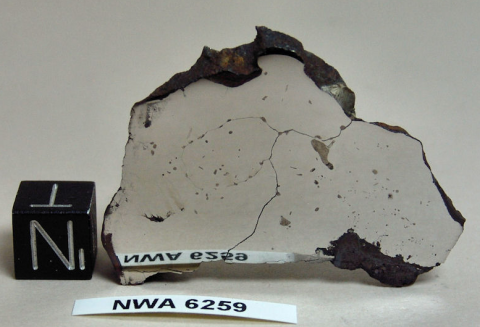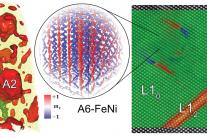On Friday, 18 October 2025 we hosted approximately 500 high school students at
Hidden Atomic-Scale Structure in a Metallic Meteorite
Thu, 10/28/2021 - 10:23amMichalis Charilaou of our Department of Physics and an international team of researchers from the U.S. and Germany discovered a new metallic phase of iron-nickel in a meteorite from North-West Africa. This new metallic phase, previously undetected due to its very small size, has exotic structural and magnetic properties, and impacts not only how iron meteoritic data might be used to interpret the origins of our solar system but also provides new information for the development of new types of sustainable permanent magnets for energy applications.

Their paper, Discovery and Implications of Hidden Atomic-Scale Structure in a Metallic Meteorite appears in Nano Letters 2021, 21, 19, 8135–8142.
Here is the abstract: Iron and its alloys have made modern civilization possible, with metallic meteorites providing one of the human’s earliest sources of usable iron as well as providing a window into our solar system’s billion-year history. Here highest-resolution tools reveal the existence of a previously hidden FeNi nanophase within the extremely slowly cooled metallic meteorite NWA 6259. This new nanophase exists alongside Ni-poor and Ni-rich nanoprecipitates within a matrix of tetrataenite, the uniaxial, chemically ordered form of FeNi. The ferromagnetic nature of the nanoprecipitates combined with the antiferromagnetic character of the FeNi nanophases gives rise to a complex magnetic state that evolves dramatically with temperature. These observations extend and possibly alter our understanding of celestial metallurgy, provide new knowledge concerning the archetypal Fe–Ni phase diagram and supply new information for the development of new types of sustainable, technologically critical high-energy magnets.

